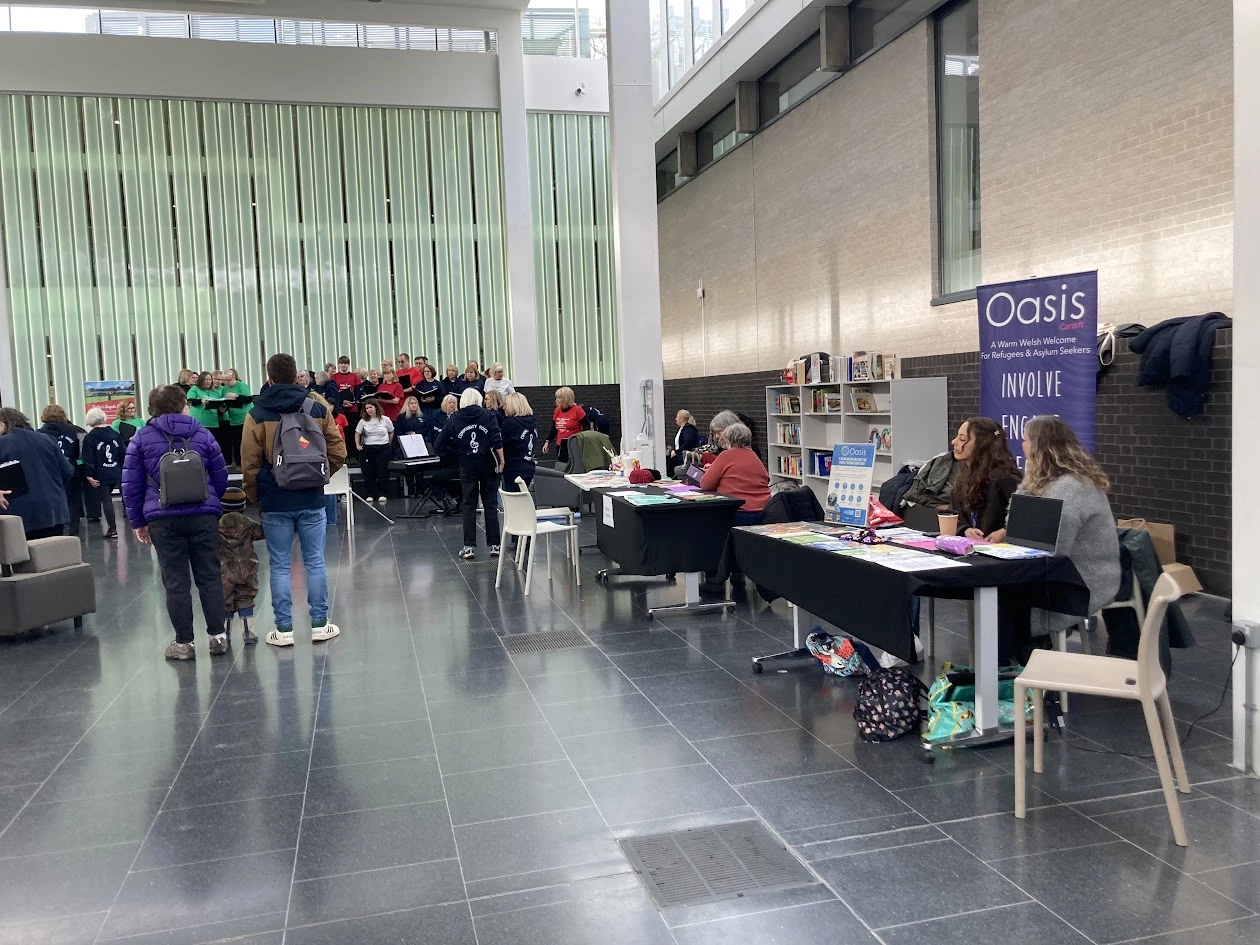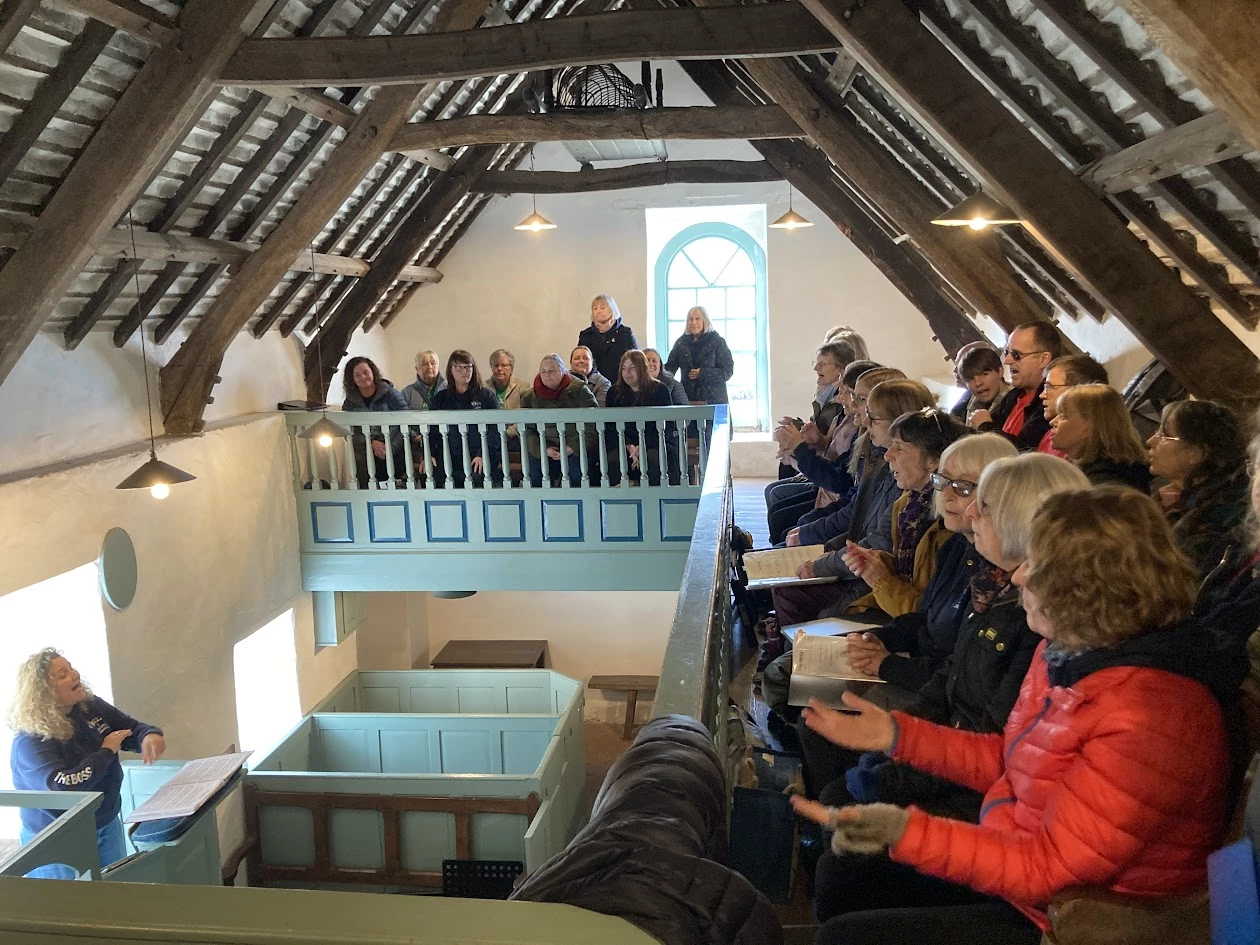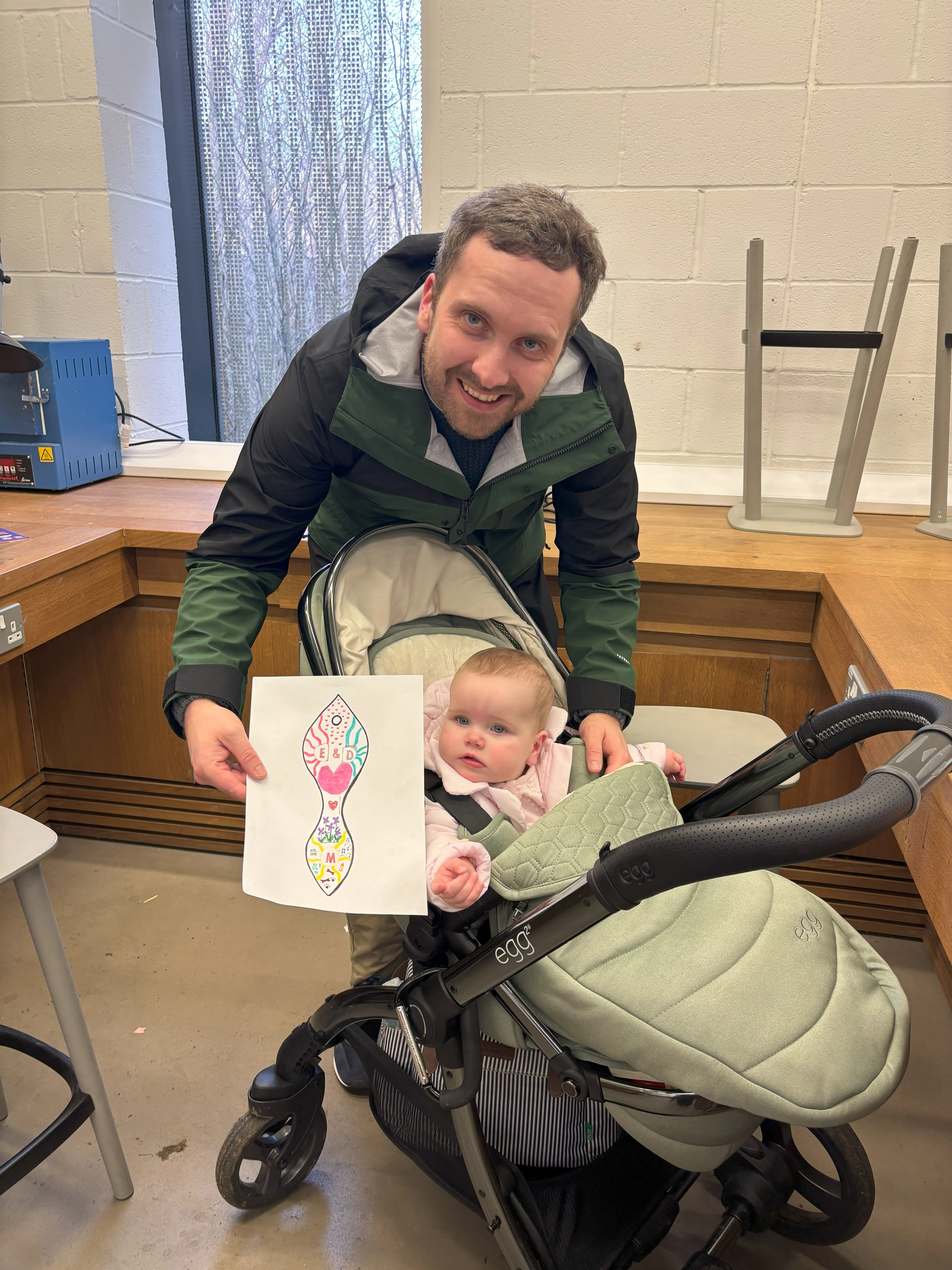Celebrating positive mental wellbeing through engaging with heritage, creativity and community on Diwrnod Santes Dwynwen:
On 25th January 2025 Amgueddfa Cymru marked Diwrnod Santes Dwynwen, the day for the Welsh Patron Saint of Love, with a festival to celebrate positive mental wellbeing supported by creativity, heritage and community. Across various of our seven museums, different activities and performances took place, designed to eliminate stress, improve mood and help people deal with everyday challenges. These included collections-inspired creative arts workshops, music recitals, choir performances, blacksmithing taster sessions and poetry workshops. In addition to this, we also hosted information marketplaces at St Fagans and Big Pit where organisations offering services to support peoples’ wellbeing could engage with the public and share information and advice.
St Fagans
At St Fagans we welcomed the Sally’s Angels Community Choir to St Fagans who sang on the Community Stage in the entrance hall of the museum as visitors arrived in the morning. This was followed by further performances on site at Penrhiw Chapel and the Oakdale Workmen’s Institute later in the day. The choir performed a range of songs in Welsh and English, including a stirring rendition of the ever-popular Calon Lan. Visitors responded really positively to the joyful and uplifting atmosphere the choir created throughout the day. Thank you to all the wonderful choir members who helped to make it such a special event.
The information stand marketplace also took place in the main entrance hall, with several organisations hosting drop-in craft activities such as decorating cardboard heart-shaped frames. These activities were very popular with children and adults alike and enabled the partner organisations to talk with visitors about their services in more detail as people spent time at the stands engaging in the crafts on offer. There was a total of eight stands, which included Velindre Cancer Centre, Oasis Cardiff, the Hapus Project (Public Health Wales), Memory Jar dementia support group, Mydiad Mythrin/Cymraeg i Blant, the Wales Ambulance Service and Platform - the mental health charity, as well as a Museum stand promoting the Amgueddfa Cymru Health and Wellbeing programme, in particular the Museums Inspiring Memories Project.
We estimate that in total the marketplace engaged with approximately 165 people throughout the course of the day.
Across the day various activities took place at St Fagans which aimed to provide a stress-free environment to enjoy and engage with the museum's collections in a creative way. These included wool craft and weaving workshops using our replica Iron Aged handlooms, mindful nature walks exploring the outside spaces, flora and fauna at the museum, and a make your own paper Love Spoon workshop inspired by the Love Spoon collection in the Gwiethdy gallery, run by artist Nia Skyrme.
The weaving workshops where participants were able to make their own woolen bookmark to take home proved very popular. The feedback was very positive with many people sharing how relaxing and mindful they found the activity and how lovely it was to do something for themselves whilst spending time with family and friends. Many parents who took part in the session told us how lovely it was to do something they could have a go at themselves, alongside their children, learning a new skill and enjoying the creative process together. The children who took part appeared to be very engaged, enjoying the workshops and leaving very pleased with their woolly bookmarks!
Participants on the mindful nature walks reported how relaxing and peaceful they found the experiences, whilst also being interesting and informative. Ian Daniel, who led the walks, was able to share mindfulness techniques which participants could take away with them and build into their daily lives, as well as sharing interesting facts about the flora and fauna they encountered on their walk.
Artist Nia Skyrme, who led the drop-in Love Spoon activity in Gweithdy, had a very busy afternoon with at least 95 people dropping in throughout the session to take part. Participants made beautiful paper love spoons representing what they held important, inspired by the lovely display in the Gweithdy gallery next door to the workshop space.
Families with older children were able to engage in this accessible art activity together, whilst giving those parents of very young children an opportunity to peacefully enjoy a creative activity whilst their little ones slept. It was a lovely way to encourage visitors to connect with the collections in a different way; the feedback was very positive.
The weather on 25th January was absolutely beautiful. The sun shone all day, attracting lots of visitors to St. Fagans - far more than we might usually expected on a late January day. This gave the festival such a boost and allowed us to promote ‘museums for wellbeing’ to a wide audience.
Big Pit
At Big Pit a range of drop-in and bookable activities were on offer.
Throughout the day, Len Howell, who has over 50 years experience of working as a colliery blacksmith, led smithing sessions in the forge at Big Pit. These were pitched at helping men deal with stress by participating in physical activity and ‘hitting the anvil hard’. With guidance, participants were able to work with hot steel and make a mini heart to take home.
Poet Patrick Jones led ‘Writing for Wellbeing’ workshops designed to beat the January blues. Through a fun and light workshop of reading, listening and discussing poems, participants also took part in writing exercises designed to lift the spirits. Participants all reported that their level of contentedness and happiness had risen by the end of the workshop, and everyone was happy to share their thoughts and feelings in a short film that was made on the day.
Families took part in a ‘Make a Love Spoon’ activity, and found out about the various symbols and meanings, before designing and making their own. This engaging activity gave people the chance to relax and chat to workshop leaders, and many people also took the opportunity to dress up in mining costumes against a historic backdrop, whilst exploring the theme of ‘Cynefin’ (Belonging.)
A number of organisations who can help with positive mental wellbeing and signpost to further information attended the marketplace on the day.
Andy’s Man Club, Torfaen Take a Stroll walking group, Sport in Mind, Torfaen Talks CIC, Alzheimer’s Society Cymru & Public Health Wales all had opportunities to engage with the public and promote the support, advice and guidance they provide. Visitors enjoyed having a play (or the odd more serious tournament) on the table tennis table supplied by Sport in Mind. Public Health Wales were able to encourage organisations to sign up as Hapus supporters.
National Wool Museum
At the National Wool Museum, visitors were invited to grab a cuppa, pick up a heart shaped Welsh cake and listen to the soothing melodies of harpist Delyth Jenkins. Delyth performed throughout the day, and gave the Museum a sense of peace and calm, which was very much appreciated by visitors.
National Museum Cardiff
At National Museum Cardiff we took the opportunity to trial our newly developed Mindful Art Trail. Louise Rogers, one of our facilitators in the Learning team has spent time over the past year developing the resources for what will become a self-led trail and invitation to experience the art galleries in a mindful way. On the day, Louise led 2 guided mindful trails, encouraging participants to look at art purely from a mindful perspective, without any pressure, and to enjoy the simple art of ‘looking’.
According to research, most people view a work of art for approximately seven seconds, but the session encouraged people to take longer to look and absorb what they were seeing, instead of rushing though the galleries. This opened up discovery of more detail in each work, and using the senses and imagination allowed people to visualise potential stories about the artworks. This was a new experience for all participants, and everyone relaxed into their own way of interacting with the art. We hope that resources like these will encourage people to view the galleries as a safe and non-judgmental space to take a break from busy daily routines, and to enjoy moments of calm.
Diolch to all our fantastic partner organisations, the members of the wonderful Sally’s Angels Choir, the brilliant workshop leaders and all those who came and took part. We couldn’t have done it without you.
People who attended the events at the different museums shared that they appreciated being able to drop into sessions free of charge, taking away the stress of entertaining children during difficult financial times.
A special thanks to the Public Health Wales Hapus Project for supporting the festival with funding, enabling us to offer more opportunities and work with the freelance creatives who helped make the event such a success. Follow the link to find out more about the Hapus Project and sign up as a supporter.
Thanks also to all the museum staff who supported the event, led sessions and helped with the logistics on the day.
As a legacy of the festival, we have produced a series of short films which are launching during Mental Health Awareness Week. Thank you to Glyn Roberts and Tom Maloney for working to capture all the wonderful activities and beautiful moments shared during the day. We’re excited to share the results!
We will also be working on developing mindfulness resources in collaboration with Mindfulness Wales for our museums as well as welcoming freelance creatives to deliver dementia friendly wellbeing workshops inspired by our collections. Watch this space for further details.


















